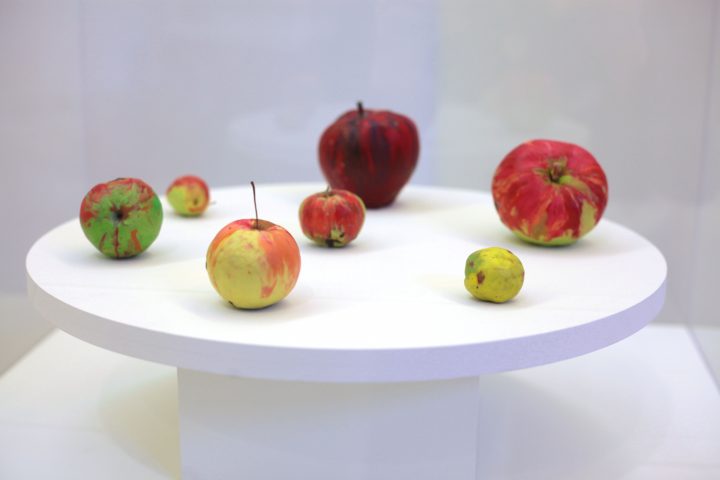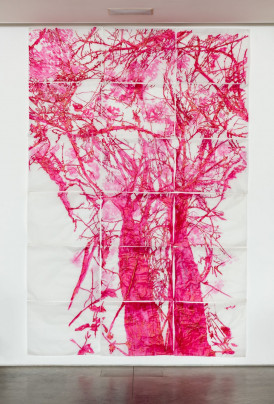
In 2019, I went to Kazakhstan to attend a conference in Almaty on the preservation last wild apple forests, which are located in the Tian Shan Mountains of Kazakhstan. Based on an expedition to these forests with Kazakh scientist Dr. Natalia Ogar and USDA plant physiologist Dr. Gayle Volk, I created work about the forests’ biodiversity and their plight within international politics.
The last wild apple forests contain Malus sieversii, the progenitor species of the edible apple Malus domestica. Endemic to Kazakhstan, this fruit, far from growing in orchard rows, flourishes in thickets of saplings next to hundred-year-old apple trees. The natural selection has provided miles of different fruit of wildly varying shapes and colors here.
Kazakhstan Elite premiered in Fruiting Bodies at Descanso Gardens in 2019.
Anticipating Red (no images), 2019
Jessica Rath with editor Stephanie Deumer and sound by Robert Hoehn
Video, rt: 9 minutes
Rather than framing the forests as vast collections of idealized specimens, Anticipating Red (no images) recognizes these forests as an evolving habitat propagated by bears feasting on the fruit for thousands of years yet constrained by human intervention.

Anticipating Red (ink forest), detail, 2019
Ink and vellum
8 by 12 foot
Anticipating Red (ink forest) is a tracing of entwining Malus sieversii at the cusp of fall. During the years as a Soviet republic (1920-1990), orchards of domesticated apples were planted deep in the “wild” apple forests thus these areas now contain hybridized trees. Humans have perennially admired apples’ red blush, but just looking at the fruit it’s hard to tell which is pure. The rare Malus niedwetzkyana is also in the forests and has a red-fleshed fruit whose deep purple leaves are an easier sign among thickets of apple trees in the Tian Shan.